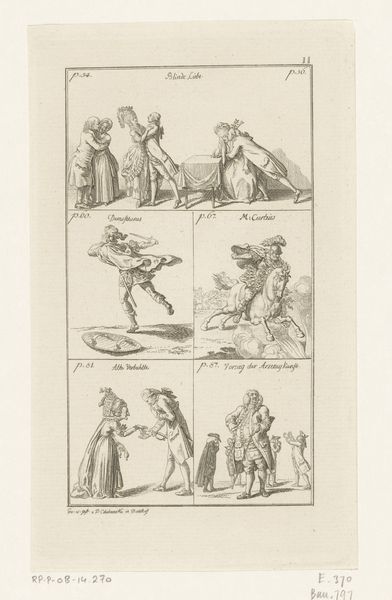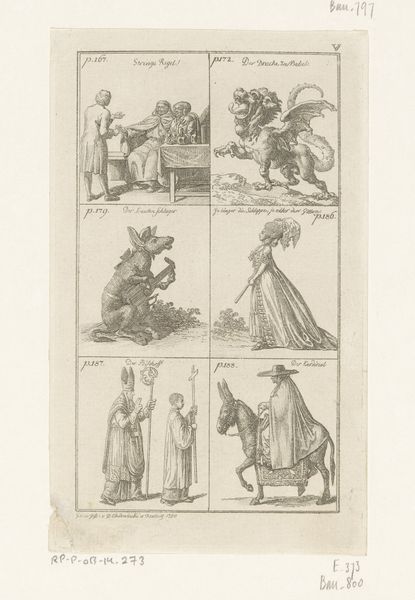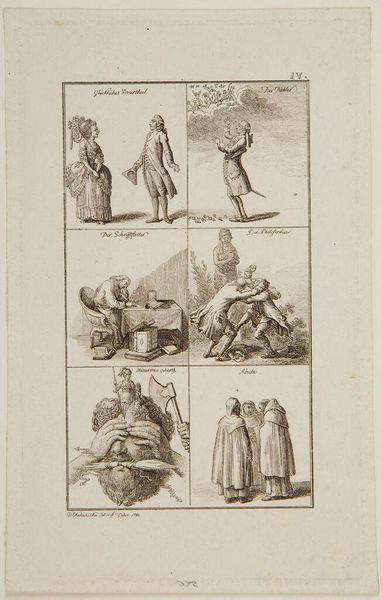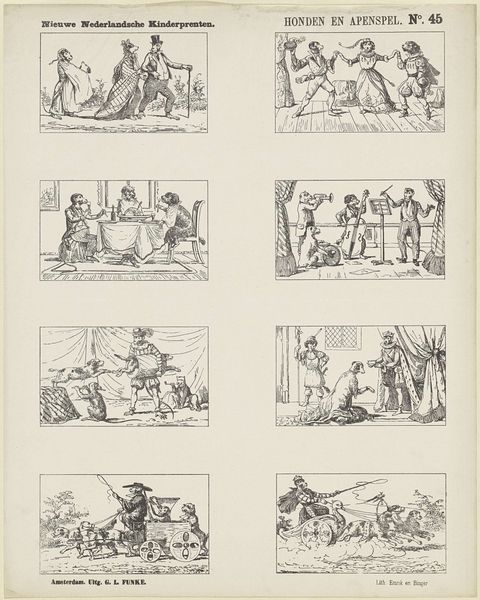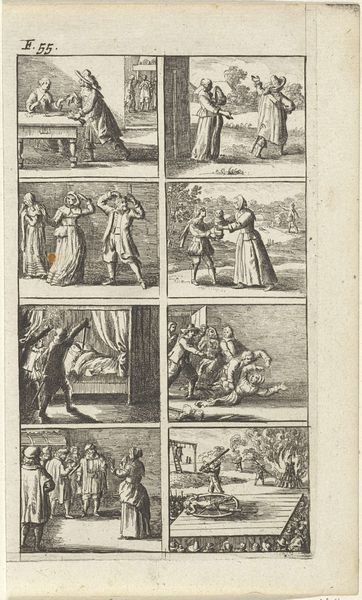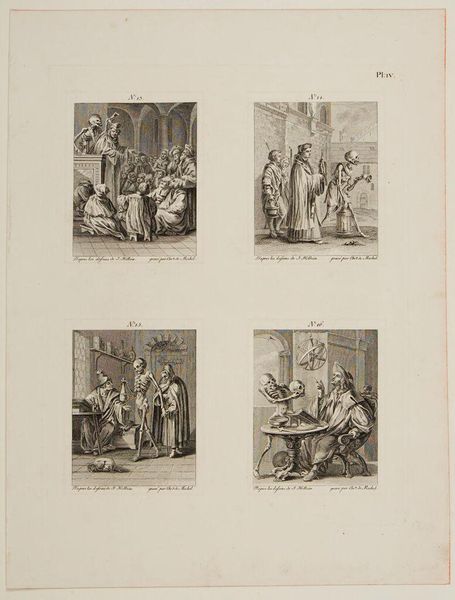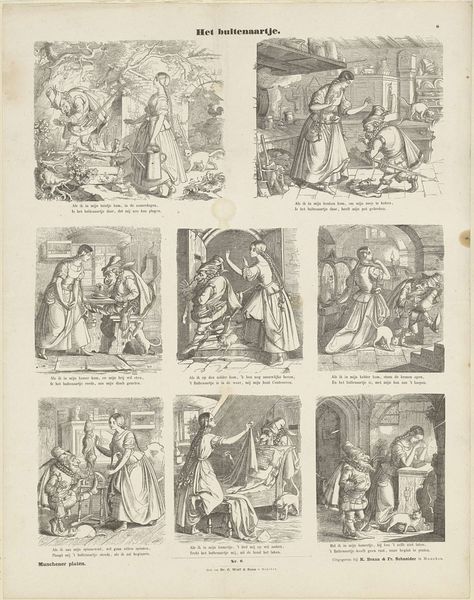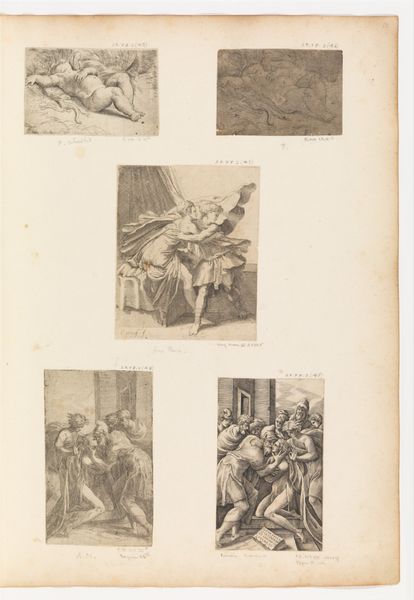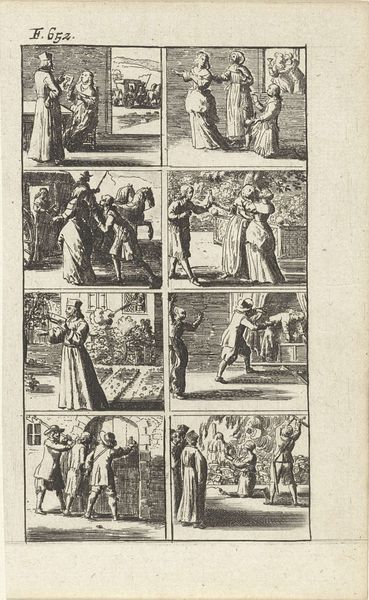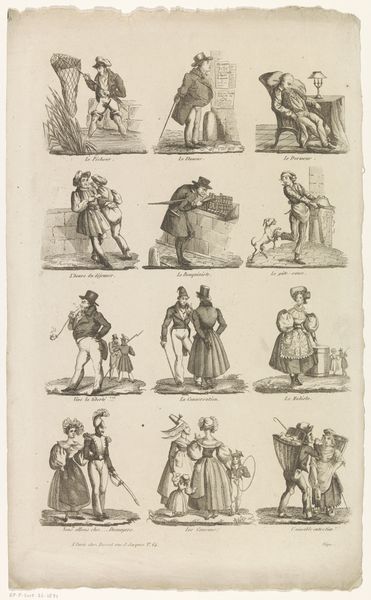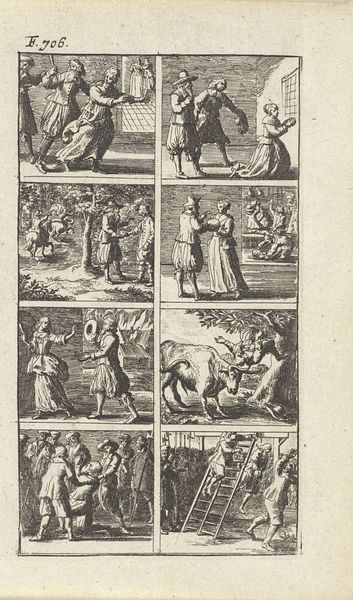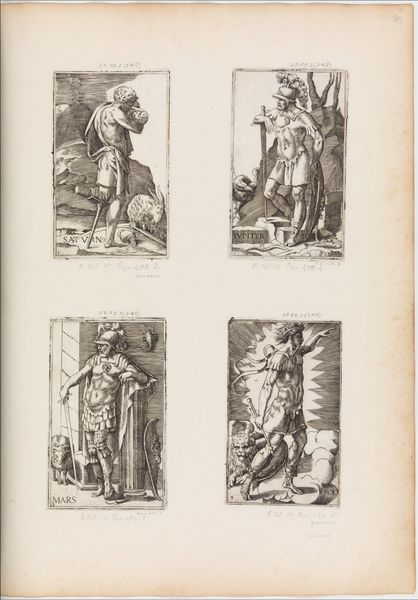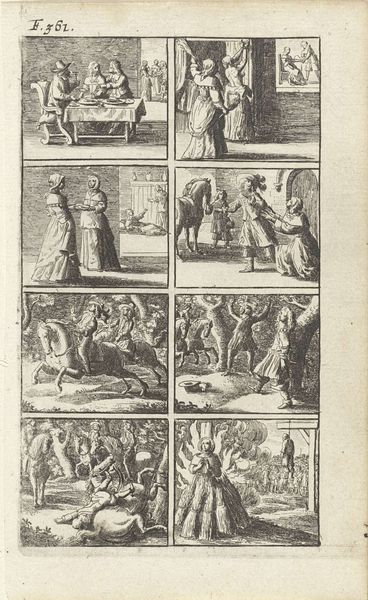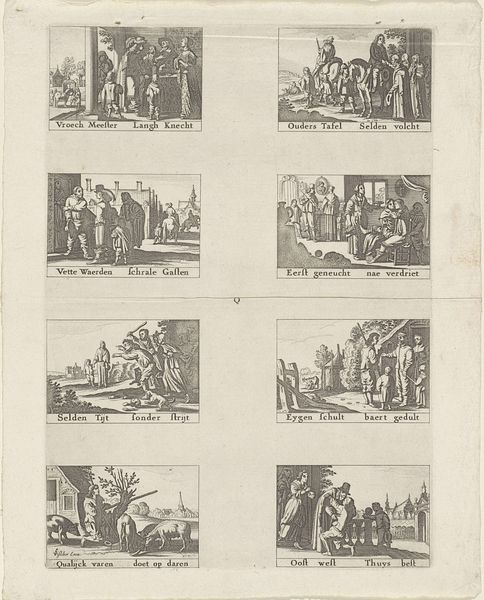
Dimensions: height 154 mm, width 93 mm
Copyright: Rijks Museum: Open Domain
Curator: This is a sheet of engravings titled "Blad uit De Lof der Zotheid," created around 1780 by Daniel Nikolaus Chodowiecki. It’s currently held here at the Rijksmuseum. What strikes you about it? Editor: Well, immediately, I see a satirical, almost darkly comedic feel. The stark monochrome, the compressed panels... it feels like a visual critique waiting to be unpacked. Curator: Absolutely. Chodowiecki was illustrating Erasmus's "In Praise of Folly." These small scenes, etched with such detail, offer insight into the follies of human nature as viewed through a late 18th-century lens. Notice how each panel presents a different tableau. The upper left appears to present courtship rituals, while in another, men wrestle—each panel hinting at different aspects of human folly. Editor: That's fascinating. I can already see so many layers to this work. It feels like an indictment of the social structures of the time. The panel showing the wrestling is particularly striking—what might that scene symbolize within the broader context? Curator: Erasmus often targeted specific groups, so in these groupings it could be representative of futile arguments, perhaps power struggles within the Church, or simply a depiction of earthly conflict devoid of spiritual merit. It's interesting that Chodowiecki has captured this duality— highlighting not just the individual’s folly, but also the systems that perpetuate it. Editor: The rendering style adds another layer. While reminiscent of Baroque detail, there's an angularity that seems to anticipate German Expressionism, foreshadowing the coming anxieties and societal shifts. In viewing it, the critique feels relevant today, almost prophetic. We’re still dealing with systems and structures promoting and engaging in our folly. Curator: I concur. Consider how accessible this medium was—print. It wasn’t just for the wealthy. Chodowiecki ensured that these critical commentaries could reach a broader audience, promoting discourse about their values. Editor: And I find myself wondering: do visual metaphors remain as powerful now in the age of moving image as they were in Chodowiecki’s day? Curator: The essence of the symbols evolves with us. It's how each generation grapples with understanding folly through art—we just have different mediums and modes of interpretation today. Editor: True. “Blad uit De Lof der Zotheid” becomes not just a historical artifact but a living conversation about humanity’s recurring shortcomings. Curator: It certainly is. This brief encounter invites further inspection, deeper questioning, to realize just how potent imagery from centuries ago remains today.
Comments
No comments
Be the first to comment and join the conversation on the ultimate creative platform.
